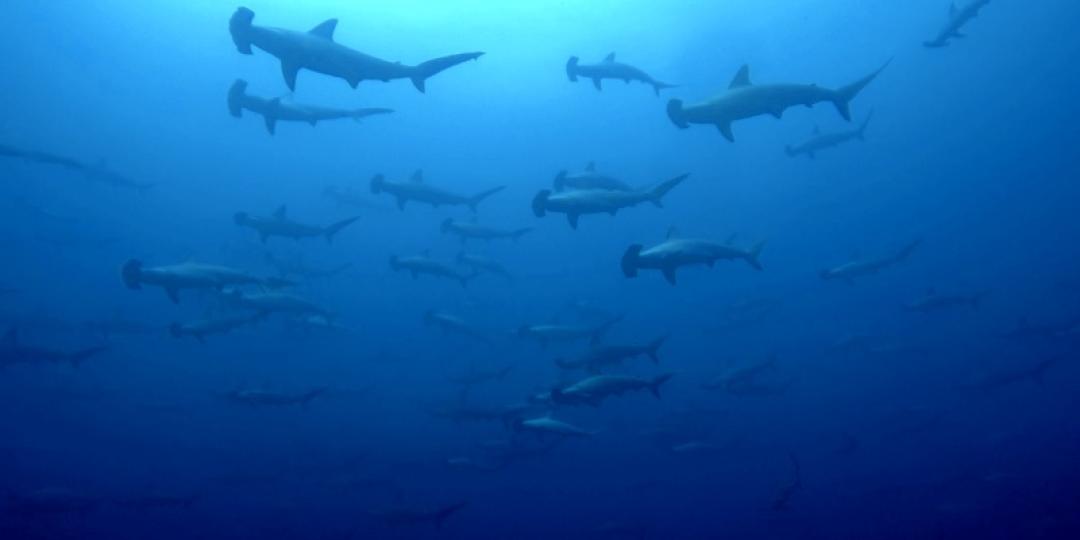Recently, the WILDOCEANS Research Vessel, RV Angra Pequena, carrying a team of researchers and marine students, set sail to Protea Banks on the south coast of KwaZulu Natal (KZN) to investigate the movements of tagged sharks and highlight the importance of canyon heads as critical shark habitat, ultimately contributing to the region’s marine tourism offerings.
The team went to retrieve telemetry receivers (listening stations) previously deployed in the area. The retrieval of these receivers is vital, letting the researchers investigate the movement of these sharks.
Dr. Jean Harris, Executive Director of WILDOCEANS, said the study was the first of its kind in South Africa and one of only a few worldwide. “The aim is to study the movement of sharks along the KZN coast. This part of the project, which is led by Dr. Matt Dicken of the KZN Sharks Board, aims to understand the importance of canyon heads as critical habitat for sharks, especially species such as Tiger, Ragged-tooth and Zambezi.”
Roland Mauz, Owner of African Dive Adventures, which operates on Protea Banks, told Tourism Update that studies such as the one WILDOCEANS was conducting, brought credibility to the dive site, and put places such as Protea Banks directly into the public eye. “The more that national and international divers and watersports enthusiasts hear about our South African tourism icons, the more interest is created, which translates into tourism bookings.
“A dive booking for Protea Banks, for instance, has a snowball effect whereby the dive operator benefits as much as the accommodation provider, the petrol station and the car-rental company,” explained Mauz. He said the tourism spin-off effect was endless, as even restaurants and souvenir shops benefited.
“With the help of the Internet and social media, interesting studies are transported around the world quickly and are soaked up eagerly by people who are looking for new adventures. Having science behind us, our tourism points of interest become real and credible. The government has understood the necessity of lending protection to unique biodiversities, which are the foundation of the future survival of our nature,” added Mauz.
He believes that it is critical to study all aspects of the world’s oceans, especially along Protea Banks, in order to capture data which, in time, will connect the dots and allow for understanding of what is beneath the water’s surface.
Harris further explained: “We are especially interested in understanding the role submarine canyons play as productive nodes in the seascape and the connectivity with shallower inshore habitats. The receivers that we retrieved and replaced are deep in 80-90m of water at canyon heads.”
In December 2018 and January 2019, WILDOCEANS undertook a Scalloped Hammerhead shark survey in Protea Banks. “As this species has only been tagged in Mozambique to date, if we picked up any signals for this species on our receivers this would show that there is a connection between sites in Mozambique and this big aggregation in southern KZN, and that the sharks are moving between them,” said Harris, expressing that the team would be excited if they were recorded on the Protea Banks receivers.
Tembisa Jordaan, Scientist from Ezemvelo KZN Wildlife who observed the telemetry retrieval, said that a special and massive shark aggregation event had been reported by divers and dive operators in the area of which there was very little research of. She feels it is important for scientists to collect as much data as possible to confirm and document such activity and conduct further research to add to the long list of reasons why areas like Protea Banks, which was recently announced as one of the new Marine Protected Areas (MPAs), are special.
“As an organisation that is mandated to protect KZN’s natural environment, it’s critical for Ezemvelo to be central to such studies so that we’re able to make note of any new findings that are made especially around MPAs, because we are going to be delegated the responsibility of maintaining the MPAs and applying the objectives and whatever management plan that arises,” said Jordaan.
The Telemetry research was filmed and is set to feature in a marine documentary series called ‘Our Oceans’ a co-production between WILDOCEANS and Off the Fence, a world-class production company, set to be released mid-2019. The ‘Our Oceans’ marine documentary series (and feature film) will profile marine expeditions on board the RV Angra Pequena, raising awareness and knowledge about KZN’s marine ecosystems, animals and profiling the region’s marine tourism.

Ezemvelo KZN Wildlife Scientist, Tembisa Jordaan, and WILDOCEANS Executive Director, Dr Jean Harris, pictured in Duiker Island, Hout Bay, before a research dive that was filmed as part of Our Oceans film Sharks Episode. Credits: WILDOCEANS.
The expedition formed part of the ‘Canyon Connections’ project, funded by the National Research Foundation through the African Coelacanth Ecosystem Programme, which is managed by the South African Institute of Aquatic Biodiversity.






















